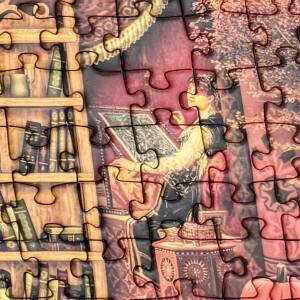Runes
For some reason I have always been fascinated by Runes, and their magical qualities telling of ancient times. I don't know where or when I got this little book, but it is the kind of thing that I would pick up somewhere . . . just because. Now it is all coming together as I follow my course on Anglo-Saxon writings and find out so much about Old English, especially as a written language. And during our visit to the Ruthwell Cross in Southern Scotland a couple of weeks ago I found runes as they appear on the cross and spell out the words of a poem we have looked at - The Dream of the Rood.
Runes began as symbols and eventually developed into an alphabet, a version of which was used in Anglo-Saxon writing from 5th to the 10th century. Each rune, although representing a letter, still had a magical symbolic meaning and it's interesting that many of our everyday words are related etymologically to the Old English runes.
Example - our word fee from the first rune feoh meaning cattle or wealth. In former times the amount of cattle an individual possessed was a measure of their wealth. The rune is shaped like horns.
The Scottish dialect word ken meaning know - from the rune cen meaning torch or reveal and shaped like a firebrand.
rune nyd meaning need/crave and looking very much like fingers crossed.

Comments
Sign in or get an account to comment.


